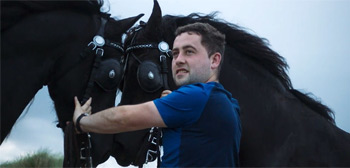In West Africa, the Adze Is an Insectoid Source of Misfortune
Atlas Obscura and Epic Magazine have teamed up for Monster Mythology, an ongoing series about things that go bump in the night around the world—their origins, their evolution, their modern cultural relevance.
As night settles across Togo and Ghana, the adze, it is said, slips through keyholes, under windows, around doors. They fly to the bodies of the sleeping, appearing as mosquitos, beetles, fireflies, or simply balls of light. The adze prey on men and women, but enjoy the blood of children most of all.
For centuries, the Ewe people of West Africa have lived in fear of the adze. As legend goes, there’s no potion, spell, or weapon that can ward one off, and no cure for the bitten. The adze will either drain the person of life, or possess them, consigning them to madness or misery—if not both. When asked about the adze, one Ewe professor based in the United States replied, “I’ve come across adze, but only as a witch. Witches in this culture are real, not mythical.” (He did not respond to further requests for comment.)
There’s no record of when the lore of the adze first began. Archaeological evidence shows that the Ewe people settled the coast of West Africa, in the tropical region of what is now Ghana and Togo, around the 13th century. Historians believe the adze originated as an explanation of and warning against malaria and other insect-borne diseases that the Ewe people felt powerless against.

In the 19th century, after Christian missionaries from Europe established colonies in the region, the adze evolved into a scapegoat for a range of other evils—personal, cosmic, biological. If an individual showed signs of jealousy, mental illness, bad luck, addiction, marriage problems, or the inability to conceive a child—just to name a few—adze possession was often considered the culprit.
According to historian Brian P. Levack of the University of Texas at Austin, author of New Perspectives on Witchcraft, Magic, and Demonology: Witchcraft in the Modern World, as the Ewe people were exposed to the teachings of missionaries, they did not forgo their traditional religion of Vodun—which means “spirit” in Ewe and is the source of the various Vodou or Voodoo traditions in the Americas—for Christianity. Instead, they loosely combined the two. “The Ewe Christians kept their old faith and fears and put the Christian Good on top,” Levack writes. The adze, therefore, began to merge with and resemble something more akin to the Devil.
This incarnation continues today. One member of the Ewe tribe who agreed to give insight into the adze canceled just hours before his interview. “I’ve had a bad dream the night after I agreed to talk to you about the Adze,” he wrote in an email. “I’ve been trying to pray about it since I’m a Christian to get some directions from God. Unfortunately I will not be able to move ahead with it [the interview]. I hope you understand.”





